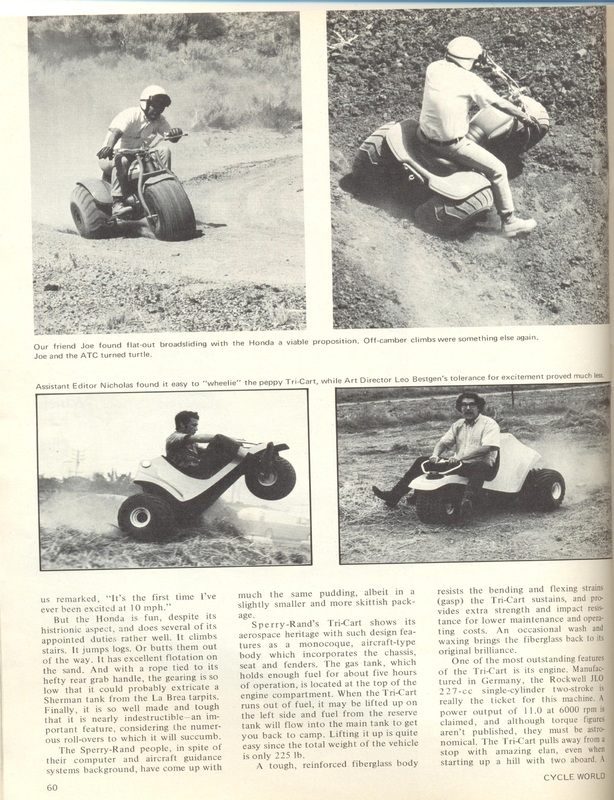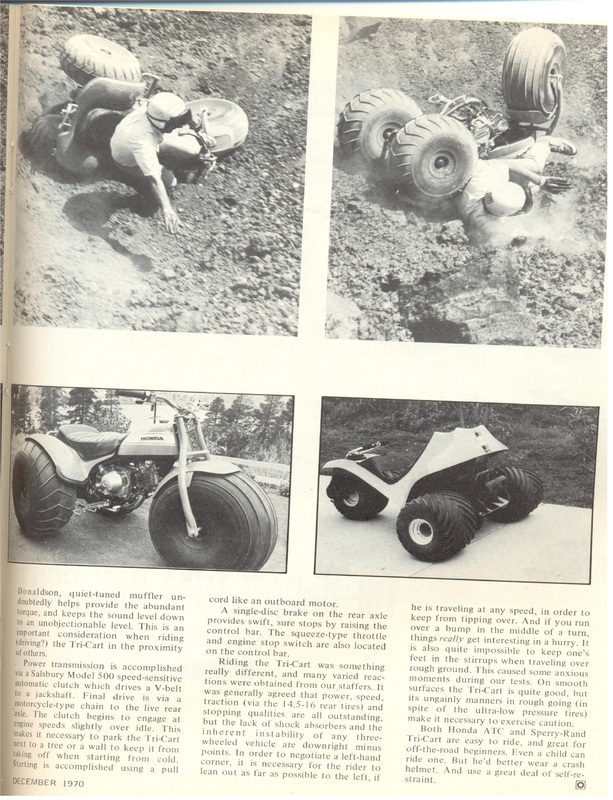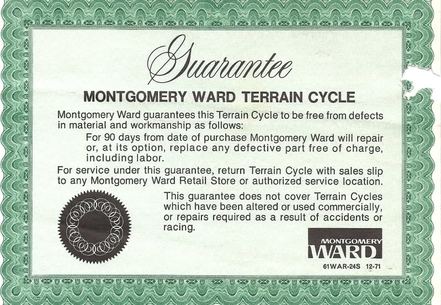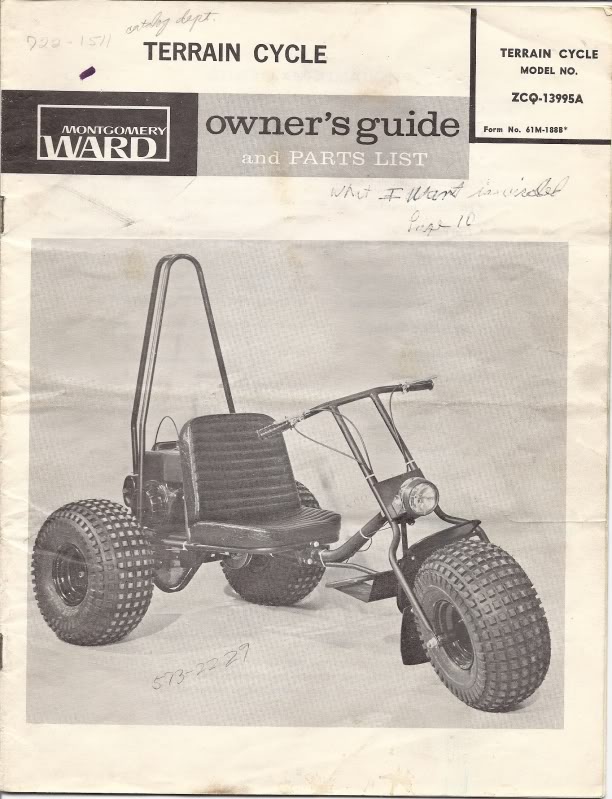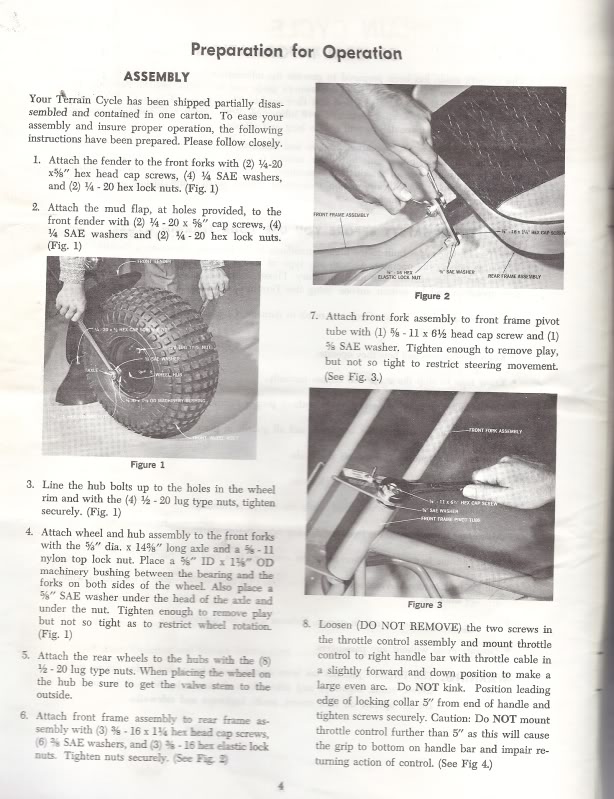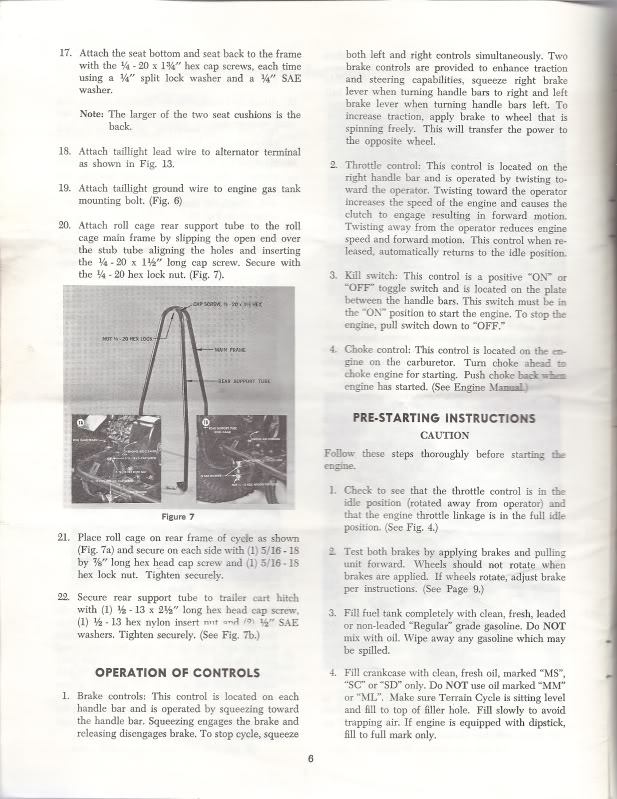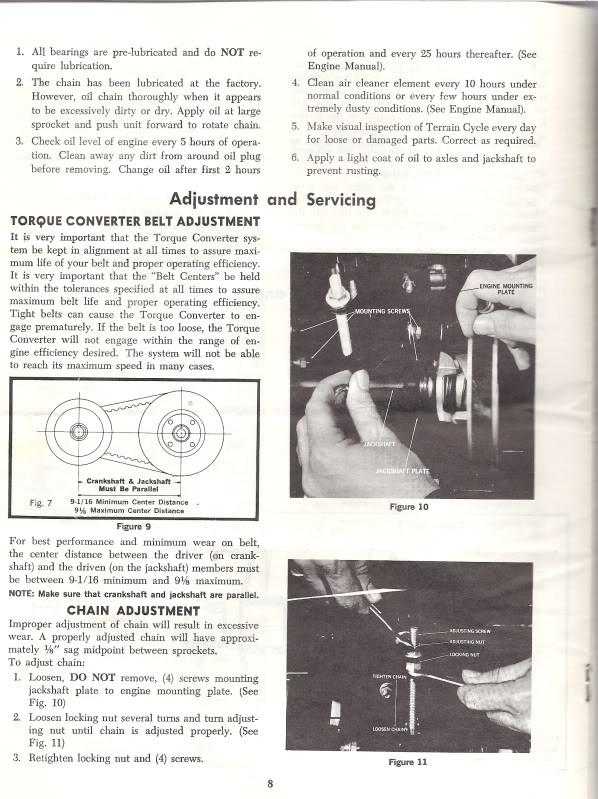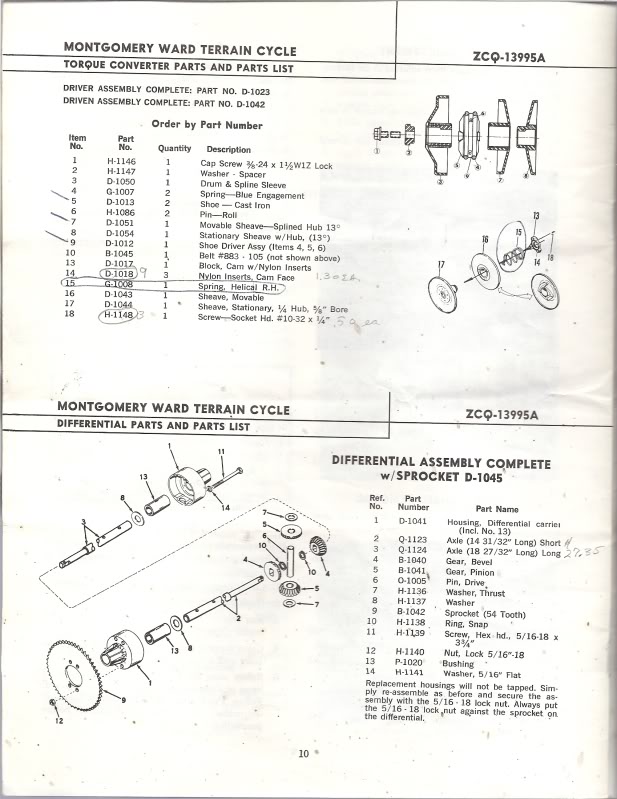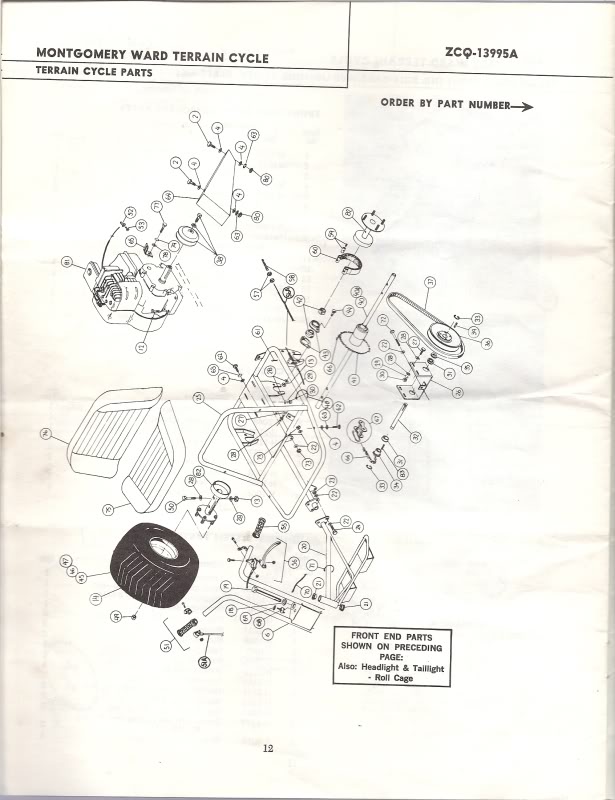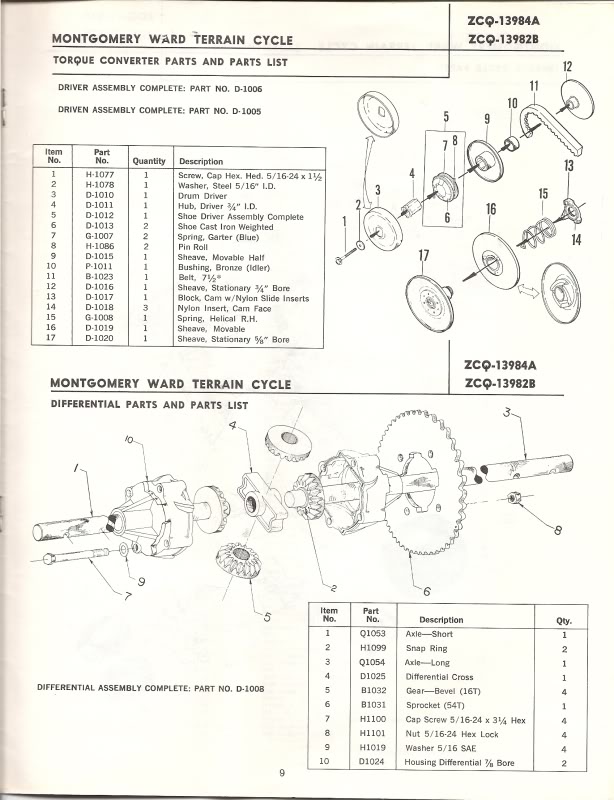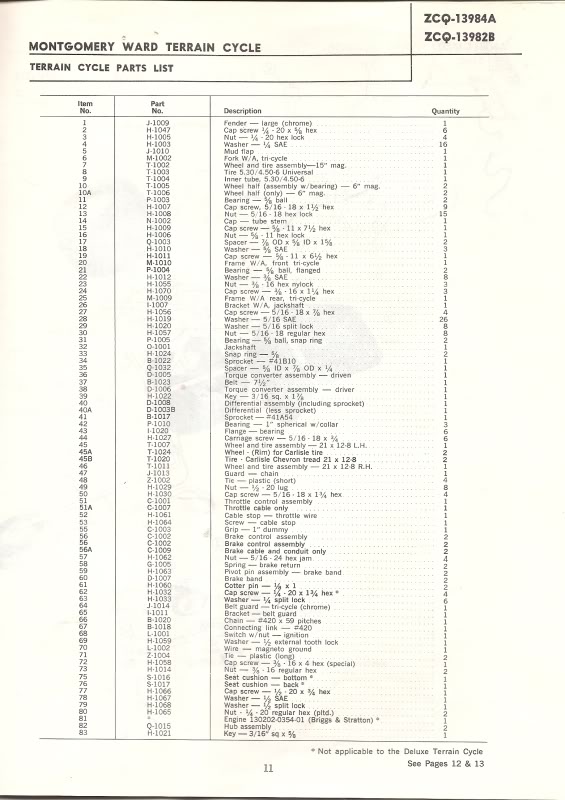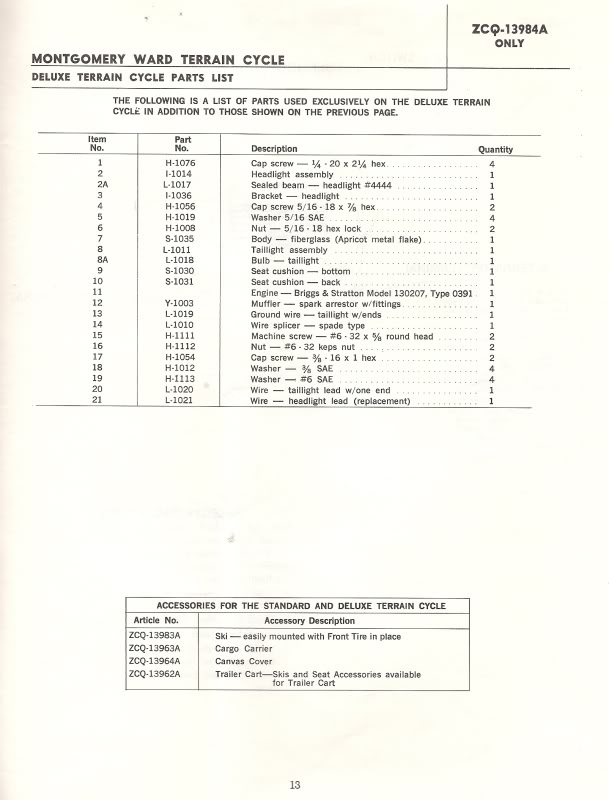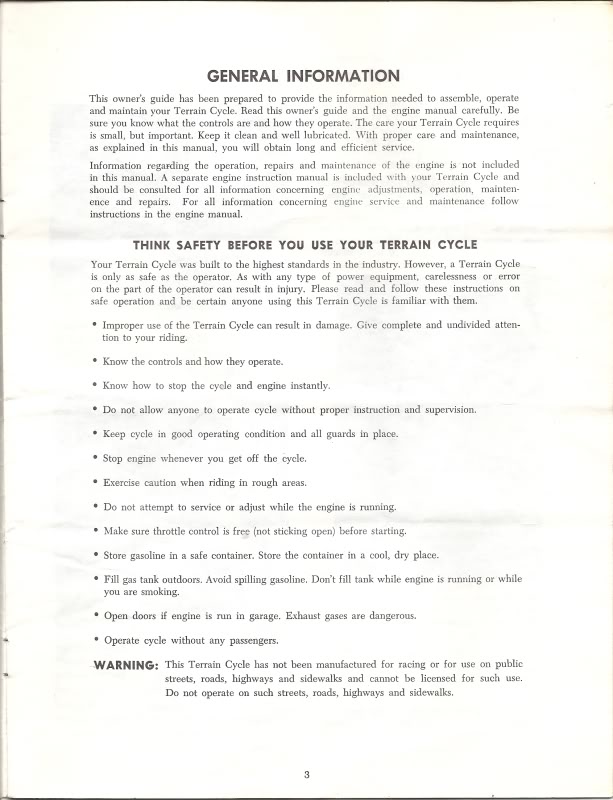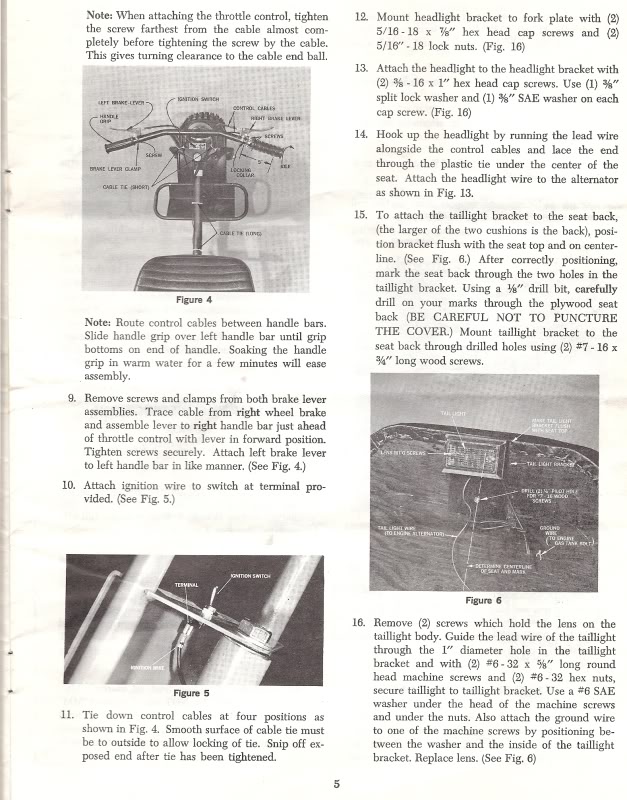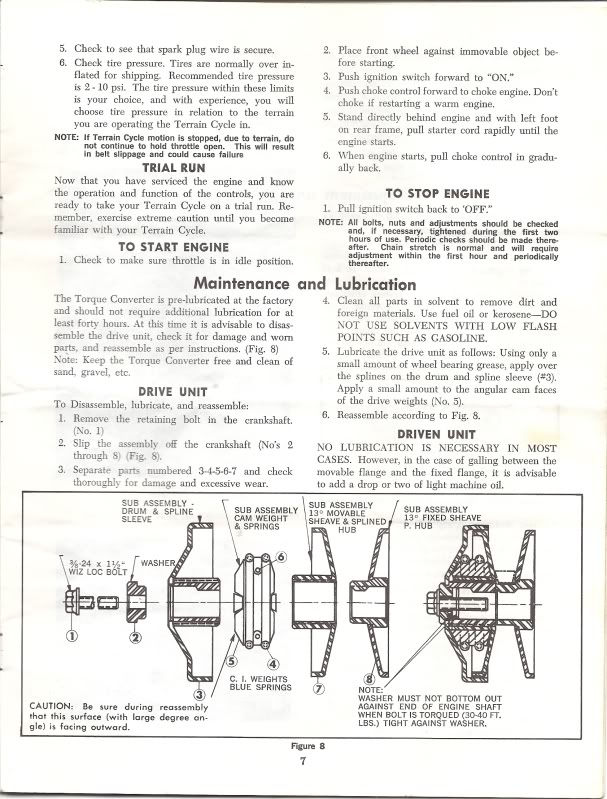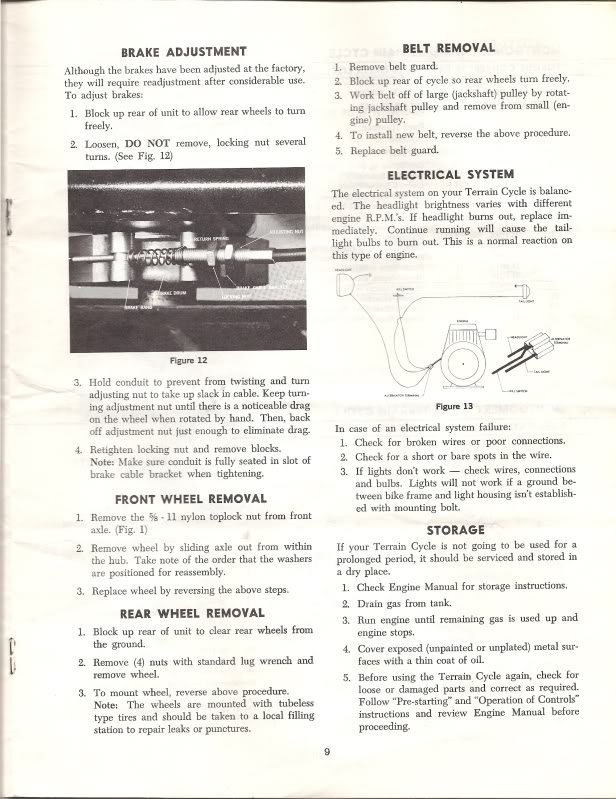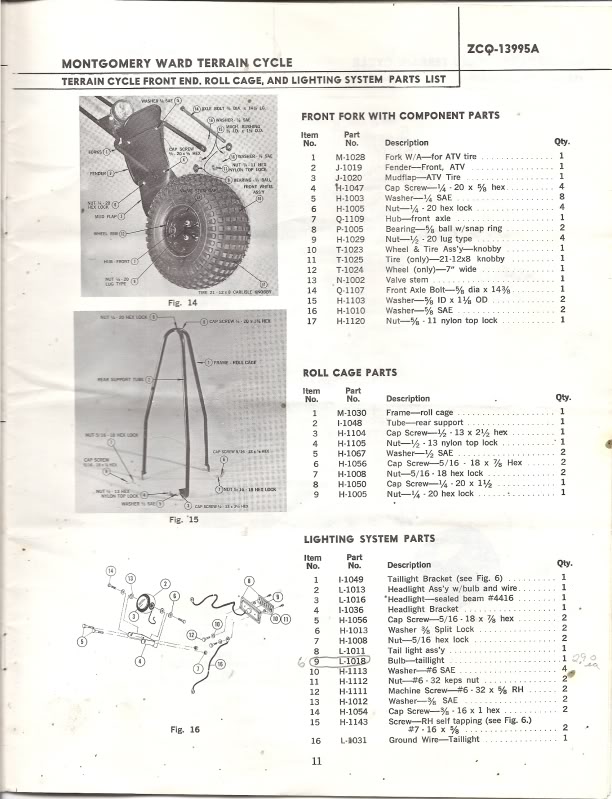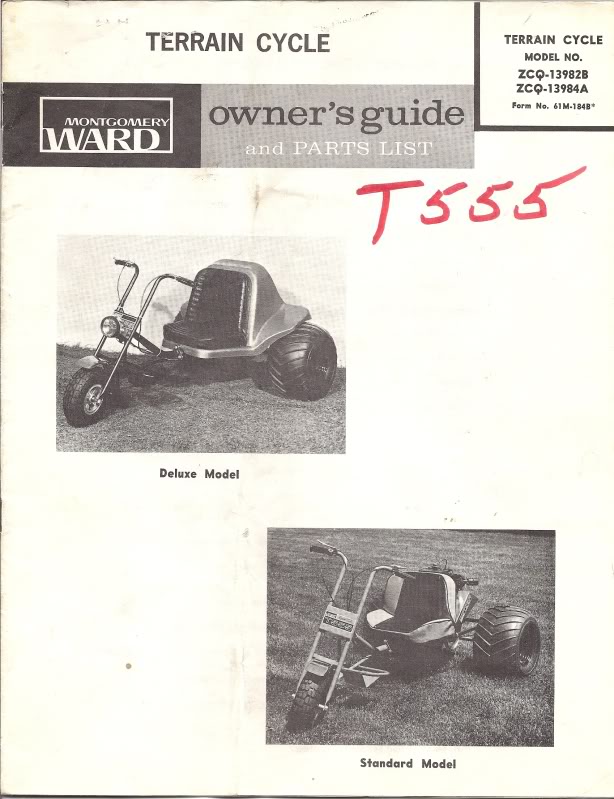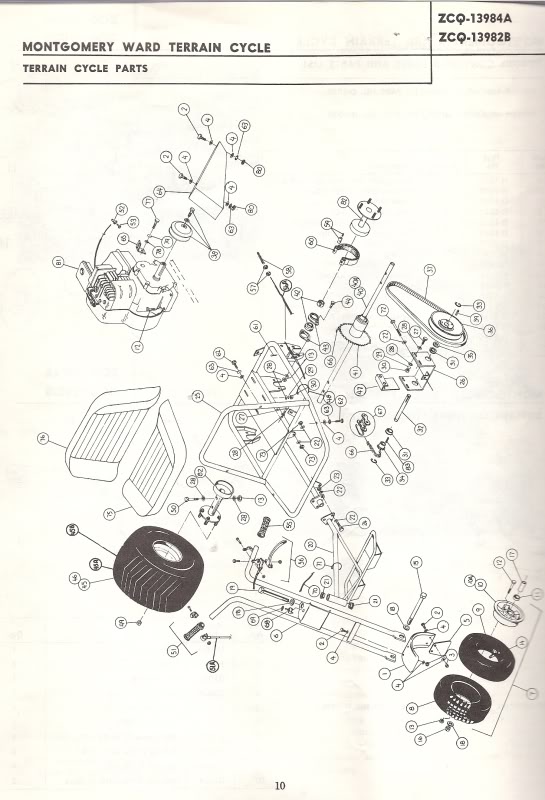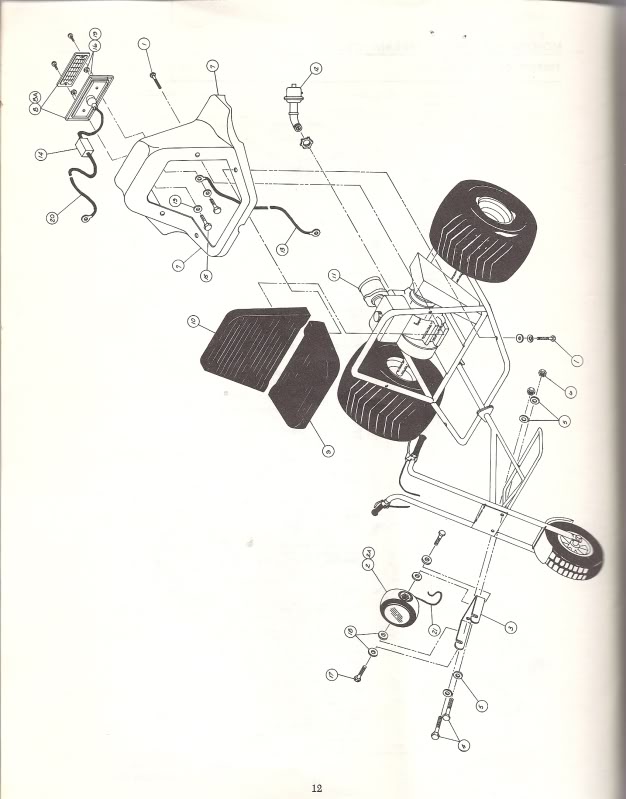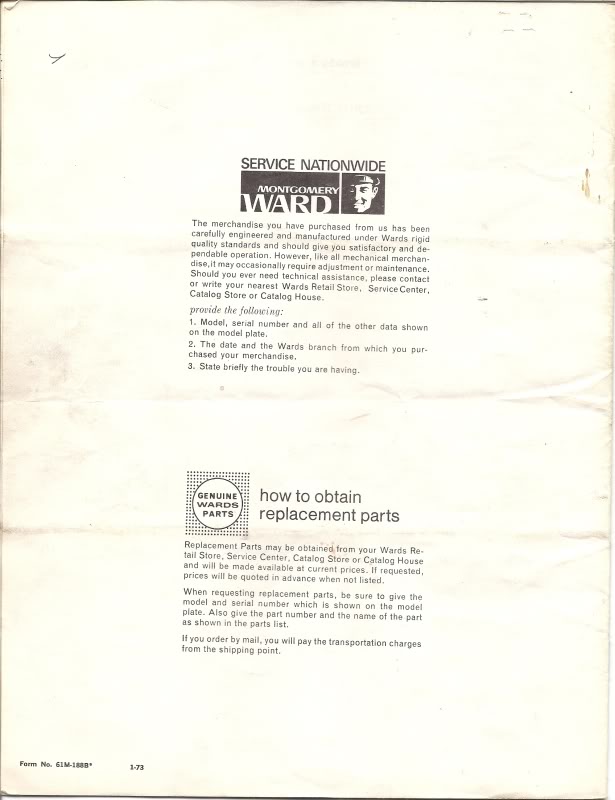3 wheelers and trikes
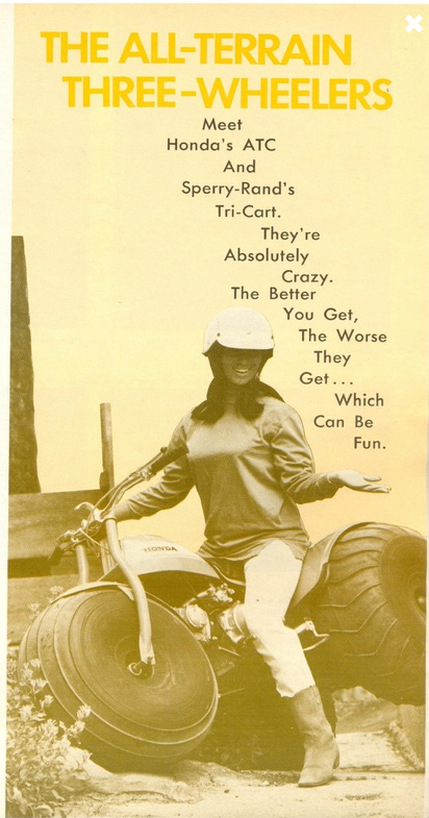 "I had nothing to do with getting it here so why should I have to get it out?"
"I had nothing to do with getting it here so why should I have to get it out?"
If you were a subscriber of the now defunct ATV Magazine and ATV Magazine Blog you would have read my article I wrote back in 2009 about some of the first 3 wheelers & trikes I ever rode. As a matter of fact a 3 wheeler was the first motorized vehicle I ever rode before getting into motorcycles shortly there after.
Click HERE or the graphic below if you want to read my article about 3 wheeled machines from 2009. Otherwise this page will have information that I have or have gathered about specific machines that may help those wishing to restore these machines or understand a little history on them. Below is a Cycle World 1970 dealing with the, now classic, Honda ATC90 and the more obscure Sperry-Rand Tri-Cart.
Click HERE or the graphic below if you want to read my article about 3 wheeled machines from 2009. Otherwise this page will have information that I have or have gathered about specific machines that may help those wishing to restore these machines or understand a little history on them. Below is a Cycle World 1970 dealing with the, now classic, Honda ATC90 and the more obscure Sperry-Rand Tri-Cart.
|
THE ALL TERRAIN THREE-WHEELERS
Meet Honda's ATC and Sperry-Rand's Tri-Cart. They're absolutely crazy. The better you get, the worse they get... Which can be fun. It's debatable whether the motorcycle world has been waiting breathlessly for the balloon-tired motor-powered tricycle. Nevertheless, two of these machines claiming all-terrain capability have made their debut. As a class of machine the Honda ATC and the Sperry-Rand Tri-Cart are fun and games. But the joys of riding these contraptions are not the same as those of motorcycling. A dirt motorcycle is a relatively nimble, proportionately, as the rider's skill develops. Contrary, the better the rider gets on a three-wheeler, the more cumbersome, if not hairy handling, his mount becomes. With motorcycling comes pride of accomplishment. With three-wheeling ATC or Tri-Cart style, the pride of accomplishment comes in smaller does and the satisfaction of mind winning out over matter lasts about as long as that which follows a hot session on the bumper car track at the Long Beach pier. But anyone can ride the little devils. Even with a non-functioning inner ear. Having a triangular base they can't fall over on their sides. At least when they are sitting still. And they do exhibit remarkable climbing ability. Honda's ATC consists of a 90cc single-cylinder four-stroke engine in a pressed steel frame, which drives the fiberglass shrouded back wheels through a locked rear axle. Front and rear suspension is rigid but the ride is made soft and oozy by the 22-11 Ohtsu tires, which are inflated to only 2psi! The rider sits on a comfortable motorcycle-type seat with his feet in stirrup footpegs and steers with a handlebar. Rear braking is available both through a right hand foot lever and the left handgrip. The throttle is operated by squeezing a lever on the right handgrip. The on-off switch is at thumbs reach on the right handgrip. After starting the engine with a spring-return pullcord, the rider merely has to stamp the ATC into gear and then gas it. An automatic centrifugal clutch does the rest, even to the point of releasing momentarily as you shift through four gears. The transmission has a dual range lever, so there are eight speeds forward-four low once for steep going and four for faster speeds on easy terrain. So, briskly away you go, popping mushy wheelies, until you arrive at the first bend, and it doesn't want to. Then by dint of heavy muscle on the handlebars, a judiciously applied throttle, and body lean to the outside of the turn (against all logic), it turns. Wheewoo, the inside wheel is in the air! (Page 2) As one of us remarked, "It's the first time I've ever been excited at 10 mph." But the Honda is fun, despite its histrionic aspect, and does several of its appointed duties rather well. It climbs stairs. It jumps logs. Or butts them out of the way. It has excellent floatation on the sand. And with a rope tied to its hefty rear grab handle, the gear is so low that it could probably extricate a Sherman tank from the La Brea tarpits. Finally, it is so well made and tough that it is nearly indestructible-an important feature considering the numerous roll-overs to which it will succumb. The Sperry-Rand people, in spite of their computer and aircraft guidance systems background, have come up with much the same pudding, albeit in a slightly smaller and more skittish package. Sperry-Rand's Tri-Cart shows its aerospace heritage with such design features as a monocoque aircraft-type body which incorporates the chassis seat and fenders. The gas tank which holds enough fuel for about five hours of operation , is located at the top of the engine compartment. When the Tri-Cart runs out of fuel, it may be lifted up on the left side and fuel from the reserve tank will flow into the main tank to get you back to camp. Lifting it up is quite easy since the total weight of the vehicle is only 225 lb. A tough reinforced fiberglass body resists the bending and flexing strains (gasp) the Tri-Cart sustains, and provides extra strength and impact resistance for lower maintenance and operating costs. An occasional wash and waxing brings the fiberglass back to its original brilliance. One of the most outstanding features of the Tri-Cart is its engine. Manufactured in Germany, the Rockwell JL0 227cc single-cylinder two stroke is really the ticket for this machine. A power output of 11.0 at 6000rpm is claimed, and although torque figures aren't published, they must be astronomical. The Tri-Cart pulls away from a stop with amazing clan, even when starting up a hill with two aboard. (Page 3) A Donaldson, quiet-tuned muffler un-doubtedly helps provide the abundant torque, and keeps the sound level down to a unobjectionable level. This is an important consideration when riding (driving?) the Tri-Cart in the proximity of others. Power transmission is accomplished via a Salisbury Model 500 speed-sensitive automatic clutch which drives a V-belt to a jackshaft. Final drive is via a motorcycle type chain to the live rear axle. The clutch begins to engage at engine psees lightly over idle. This makes it necessary to par the Tri-Cart next to a tree or a wall to keep it from taking off when staring from cold. Starting is accomplished using a pull cord like an outboard motor. A single-disc brake on the rear axle provides swift, sure stops by raising the control bar. The squeeze-type throttle and engine stop switch are also located on the control bar. Riding the Tri-Cart was something really different, and many varied reactions were obtained from our staffers. It was generally agreed that power, speed, traction (via the 14.5-16 rear tires) and stopping qualities are all outstanding but the lack of shock absorbers and the inherent instability of any three wheeled vehicle are downright minus points. In order to negotiate a left-hand corner it is necessary for the rider to lean out as far as possible to the lef, fi he is traveling at any speed, in order to keep from tipping over. And if you run over a bump in the middle of a turn things get really interesting in a hurry. It is also quite impossible to keep one's feet in the stirrups when traveling over rough ground. This caused some anxious moments during our tests. On smooth surfaces the Tri-Cart is quite good, but its ungainly manners in rough going (in spite of ultra low pressure tires) make it necessary to exercise caution. Both the Honda ATC and Sperry-Rand Tri-Cart are easy to ride, and great for off the road beginners. Even a child can ride one. But he'd better wear a crash helmet. And use a great deal of self-restraint. |
Montgomery Ward Terrain Cycle
Montgomery Ward Terrain Cycle, parts list, owners and service manual. These are scans of the original manual for the T555 and larger Terrain Cycle sold though Montgomery Ward stores and catalogs.
The manuals are for the Terrain Cycle T555: ZCQ-13982B (Deluxe fiberglass body) ZCQ-13984A (Standard) and Terrain Cycle ZCQ-13995A (Large model).
Hopefully these scans can aid in people searching for information to restore the Wards Terrain Cycle trikes.
The manuals are for the Terrain Cycle T555: ZCQ-13982B (Deluxe fiberglass body) ZCQ-13984A (Standard) and Terrain Cycle ZCQ-13995A (Large model).
Hopefully these scans can aid in people searching for information to restore the Wards Terrain Cycle trikes.




